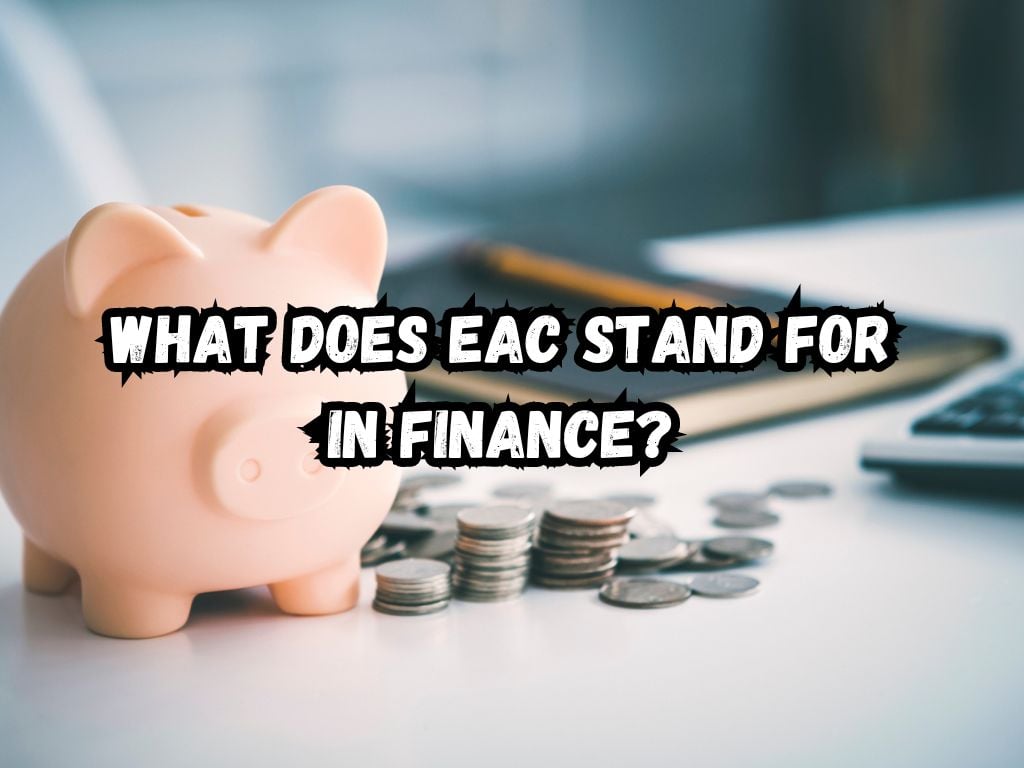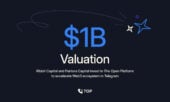Understanding finance’s alphabet soup of acronyms can sometimes feel like learning a whole new language. Among them, EAC stands out for its critical role in financial planning and analysis.
Standing for Estimated Annual Cost, EAC offers a lens through which to assess the wider financial implications of various decisions, from personal investments to major corporate expenditures.
What Does EAC Stand For in Finance?
At its core, EAC represents the yearly cost associated with maintaining and operating an investment or asset.
Calculating EAC requires a comprehensive look at not just the initial purchase price but also ongoing expenses such as maintenance, operational costs, and even expected depreciation over time.
This broader perspective helps individuals and businesses alike grasp the real cost of an investment beyond its sticker price.

Importance of EAC in Financial Planning
EAC plays a pivotal role in sound financial planning. By providing a clear picture of ongoing expenses, it aids in creating more accurate budgets and forecasts.
Additionally, when comparing different investment options, EAC allows for a like-for-like comparison, stripping away the variances of upfront costs to spotlight the longer-term financial commitment each option represents.
Components of EAC
The calculation of EAC weaves together various elements, including operational expenses, routine maintenance, repairs, and depreciation.
For example, the EAC of owning a vehicle would not only include the purchase price but also factors like annual servicing, fuel costs, insurance, and the vehicle’s depreciation.
Understanding these components and how they contribute to the overall EAC is crucial for accurate financial analysis.
EAC in Personal Finance
In the realm of personal finance, EAC proves invaluable in making informed decisions about significant purchases or investments.
Considering the EAC of buying a home, for instance, encompasses more than just the mortgage payments.
It includes property taxes, insurance, maintenance, and other recurring costs, painting a fuller picture of the financial obligation involved.
EAC in Business Finance
Businesses, particularly when deliberating over capital expenditures, employ EAC as a vital tool in their decision-making arsenal. EAC aids in the evaluation of different projects or investments, helping to forecast their impact on the company’s financial health over time.
This analysis is instrumental in steering businesses towards decisions that align with their long-term profitability and strategic goals.
EAC vs. Other Financial Metrics
While EAC shares similarities with metrics like Annual Percentage Rate (APR) and Internal Rate of Return (IRR), it brings its unique perspective on financial analysis.
Unlike APR, which focuses on the cost of borrowing, or IRR, which looks at an investment’s return, EAC provides a clearer insight into the ongoing costs associated with an asset or investment. This distinction makes EAC a crucial tool for comprehensive financial planning.
Limitations and Considerations
Despite its usefulness, EAC is not without limitations. It does not account for potential changes in costs over time, such as inflation or unexpected repairs.
Moreover, relying solely on EAC can sometimes obscure the full financial picture, underlining the importance of using it in conjunction with other financial metrics for a rounded analysis.
Best Practices for Using EAC
To make the most of EAC, it’s essential to ensure the thoroughness and accuracy of your calculations. This involves considering all possible expenses and regularly reviewing and updating your EAC calculations for significant investments.
Financial tools and software can assist in this, simplifying the process and helping to avoid common errors.
Updates and Trends
The methodologies for calculating and applying EAC continue to evolve, mirroring broader trends in finance and technology.
Staying abreast of these changes is crucial for leveraging EAC most effectively, whether through adopting new software solutions or adhering to updated financial standards and practices.
EAC Calculation Examples
Calculating the EAC for a car purchase, for example, includes not just the loan payment or purchase price but also annual costs like insurance, maintenance, fuel, and depreciation.
Assume you buy a car for $20,000, with annual insurance at $1,200, maintenance at $600, fuel costs at $1,000, and depreciation at $2,000 per year. The EAC would be:
EAC = Purchase Price/Loan Duration + Insurance + Maintenance + Fuel + Depreciation
EAC = $20,000/5 + $1,200 + $600 + $1,000 + $2,000
EAC = $4,000 + $1,200 + $600 + $1,000 + $2,000
EAC = $8,800 per year
This figure gives a clearer picture of the yearly financial commitment required to keep the car.

Pro Tips
To stay ahead in financial planning and analysis, regularly consult financial news, subscribe to industry newsletters, and consider seeking advice from financial advisors.
These practices will help you remain informed about the latest developments in finance, including changes in how EAC is calculated or applied.
Frequently Asked Questions
What are the common misconceptions about EAC?
Many people mistakenly believe EAC only considers upfront costs. In reality, it encompasses all recurrent and future expenses related to an investment or asset.
How does inflation affect EAC?
Inflation can increase the future costs included in EAC calculations, making it crucial to factor in inflation rates for more accurate long-term projections.
Can EAC be applied to all types of financial decisions?
EAC is versatile but particularly useful for decisions involving long-term investments or purchases with ongoing operational costs.
How often should EAC be re-evaluated for a long-term investment?
It’s wise to review the EAC of significant investments annually or when there’s a major change in operating costs or market conditions.
Is EAC relevant in assessing the financial health of a company?
Yes, understanding the EAC of a company’s investments and assets can provide valuable insights into its long-term financial stability and efficiency.
Conclusion
EAC, or Estimated Annual Cost, serves as a comprehensive tool for understanding the long-term financial implications of various decisions, from personal investments to significant corporate expenditures.
By offering insights into the true cost of owning or investing in an asset, EAC facilitates more informed and financially sound decision-making.
By clarifying the true cost of investments and assets, EAC plays an indispensable role in promoting more financially sound choices across personal and business finance.
Incorporating EAC into your financial analysis toolkit can significantly enhance your decision-making process, leading to better outcomes and a clearer understanding of the financial road ahead.


 Tags:
Tags:










